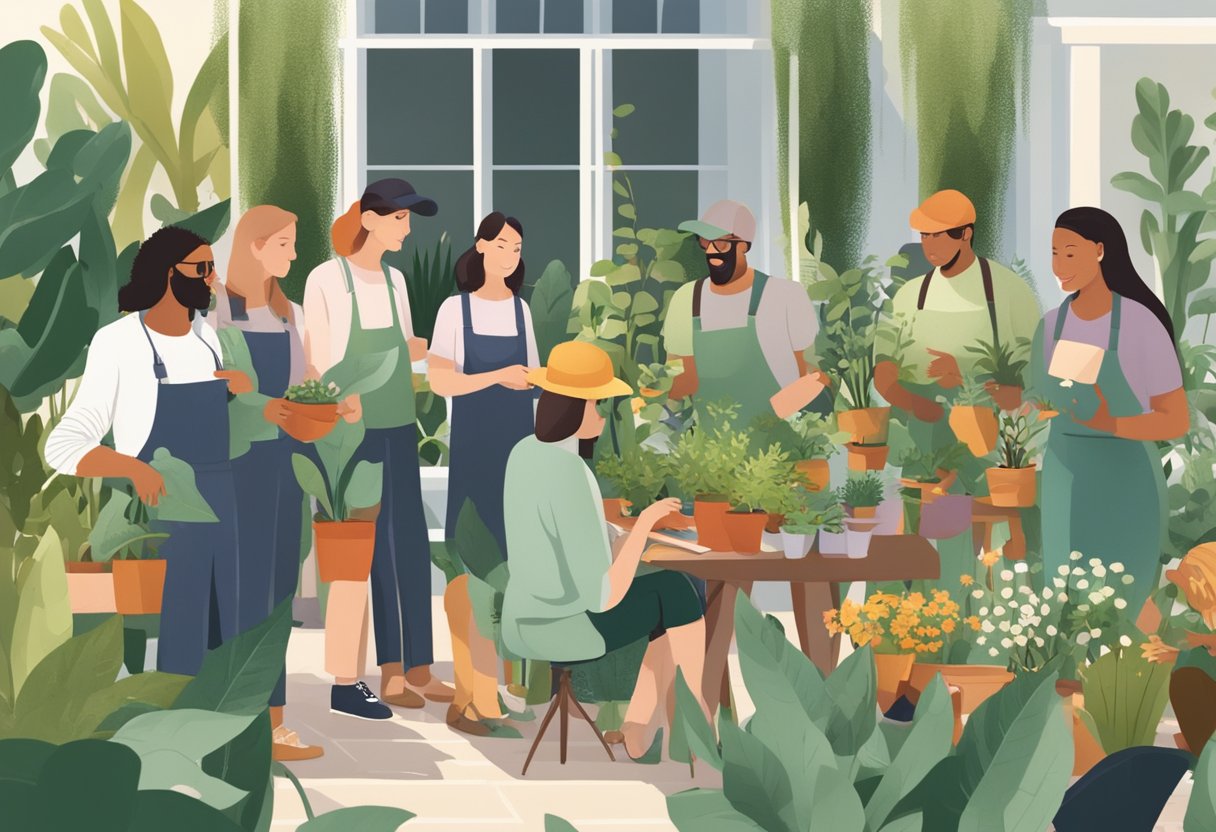Starting a garden club is an inspiring way to connect with fellow gardening enthusiasts and contribute positively to your community. My firsthand experience has shown me that a garden club can serve multiple purposes; from educational outreach and promoting sustainability to simply providing a collaborative space for people to share their passion for gardening. A well-organized club enriches its members and the broader community it serves by teaching about horticulture, providing fulfilling social interactions, and beautifying the local environment.

Through membership in a garden club, gardeners of all skill levels join together to exchange knowledge, seeds, and experiences. Being part of such a group allows me access to a diverse range of ideas and techniques, making it an invaluable resource for personal growth in the hobby. Community outreach, an integral aspect of many garden clubs, offers the opportunity to collaborate on public beautification projects, school gardens, and shared community plots, fostering a sense of togetherness and common purpose.
Establishing a new club involves strategic planning and organization. I’ve learned that clearly defining the club’s goals and structure is crucial, as is creating a mission statement that encapsulates the collective vision. Equally important is developing a plan for outreach to attract like-minded individuals. My approach has been to communicate with neighbors, local businesses, and through social media to build a diverse membership that reflects our community’s collective interests in gardening.
JUMP TO TOPIC
Starting a Garden Club
In initiating a Garden Club, I focus on laying a strong foundation through clear goals and structured meetings. This effort ensures the club’s sustained growth and impact within the community.
Setting Goals and Purpose
The first step in organizing a garden club is to define its goals and purpose. Is the aim to foster a love of gardening, focus on community beautification, contribute to environmental conservation, or establish a community garden? It’s essential to adopt clear objectives, as they will guide all future activities and decisions of the club.
- Sustainability: Promote gardening practices that support the environment.
- Education: Organize workshops and forums to learn about horticulture.
- Beautification: Work on projects to beautify public spaces.
- Community Outreach: Partner with schools or other organizations to build gardens.
Organizing Meetings and Membership
My experience has shown that regular, well-organized meetings are the backbone of a thriving garden club. Finding the right meeting time and venue, reaching out to prospective members, and setting a meeting agenda are critical steps.
I select a consistent meeting time and location that’s convenient for members. Community centers, garden centers, or member homes can serve as ideal venues. I distribute flyers and extend invitations at local nurseries or community bulletin boards to attract members.
To keep meetings engaging, I include various activities like guest speakers, seed swaps, and hands-on gardening projects. It’s essential to have a sign-up sheet to organize membership and collect contact details.
Educational Programs and Activities
Throughout my experience, initiating impactful programs and activities fosters both skill development and community involvement. They are essential elements to a garden club’s growth and sustainability, enabling members to learn and serve effectively.
Gardening Workshops and Speakers
In my garden club, I conduct a variety of workshops covering topics like seed starting, composting, and proper plant care. These practical sessions ensure continuous learning for all club members, regardless of their previous gardening experience.
- Horticulture basics
- Seasonal planting guides
- Environmentally-friendly practices
I also invite speakers from local clubs and community centers to share their knowledge in horticulture. Hearing from various experts, such as botanists and seasoned gardeners, provides a broader perspective and deepens our understanding.
Community Projects and Services
Community service is a pillar of our garden club. Projects often involve creating green spaces at local schools or collaborating with neighbors to beautify communal areas.
- Public garden installations
- Neighborhood clean-up events
- Educational outreach programs
I find that offering services like these not only aids in community beautification but also instills a sense of pride and ownership among club members. While engaging in these projects, we maintain a garden journal to document our progress, which we then compile into an eBook to share our experiences with a wider audience.
Growing and Sharing
In a garden club, we focus on enhancing our gardening skills and sharing resources. It’s about sustainable gardening, growing food, and ensuring plant health while fostering community involvement.
Plant Care and Harvesting Techniques
I’ve learned that maintaining a garden requires knowledge of plant care and efficient harvesting.
Key Harvesting Tips:
- HARVEST
- Gather flowers and produce at peak maturity.
- Use the right tools to avoid damage.
- POST-HARVEST
- Store produce properly to prolong freshness.
- Use or donate excess to avoid waste.
Sustainable techniques like composting not only enhance soil fertility but also reduce waste. In our garden club, we stress the importance of practices like composting and using organic products to keep gardens thriving without harming the environment.
Planting the right mix of flowers, vegetables, and other plants increases biodiversity and creates a resilient garden ecosystem. This also includes container gardening, which is a versatile option for members with limited space.
Exchange of Seeds and Plants
An integral part of our club is the exchange of seeds and plants. This encourages diversity in our gardens and helps preserve rare or heirloom species.
- Expands plant variety in member gardens.
- Offers a space for swapping gardening tips.
- Strengthens our community’s gardening knowledge.
By sharing seeds, we learn about different plants’ requirements and how to care for them. Initiatives like plant sales also present opportunities for us to spread the joy of gardening within the wider community and support our club’s activities. Any surplus produce from our gardens can also be shared among members or donated to local food banks and shelters, reinforcing the spirit of ‘growing and sharing’ within the community.












